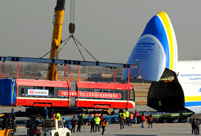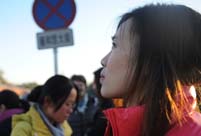The new directions and decisions
The bold new directions, set forth in a document from a drafting group led by President Xi himself, proclaimed the core principle that market forces would henceforth play a “decisive” role in the economy. The document reaffirmed earlier promises to let the market set the price of the water, energy and transport that citizens use daily. And it stated that the proper role of government is to ensure economic stability, provide public goods and a fair market and to act when the market fails. It was clear that, surely if perhaps slowly, a modern market economy would replace the old state-controlled one.
These principles were backed by several key policy decisions. In the economic realm it authorized an “acceleration” of the shift to market-determined interest rates, looking forward to the end of controls. It called for the creation of an insurance scheme for deposit insurance, to help protect citizens in this new market age. In the external sector it accordingly repeated the government’s longstanding call for full convertibility of the yuan.
To further enhance competition, state-owned enterprises (SOEs) will send 30% of their profits to the government by 2020, up from 10% at best now, to help finance social security spending. Also allowed is private investment in SOEs and private sector competition in SOE-dominated sectors, such as banking.
In the social sphere there were several key decisions that will have important economic effects. The government will speed up changes to the household registration system to give rural migrants to cities equal access to public services and even to own a house and a car. Back in the rural areas and villages, farmers will have greater ownership of their land and houses, and the ability to mortgage their homes. And the one-child policy will be relaxed. The result will be a more efficient national labour market, with the promise of a growing supply of human capital, providing critical boost at a time when China’s rapidly aging society faced growing competitive pressure from neighbours such as Vietnam where labour costs less.
In the social and personal spheres, the document called in general for social organizations to play a larger part in Chinese life, promising the expansion of service-oriented non-governmental organizations to help the government meet citizens’ welfare needs. It also ended the dreaded “education through labour” prisons and called for judicial reform.
To be sure, the obstacles facing these reforms are formidable, and it will take skill, determination and time to achieve their intended results. Resistance can be expected from those who personally benefit from corruption, from local government officials relying on land sales, from an urban middle class not wanting to share its benefits with its poorer new neighbours from the countryside and from disruptions from international affairs.
But President Xi’s speech showed that he knew this full well. Particularly promising are the new governance processes he put in place, for those processes strongly increase the likelihood that these reforms from the top would be faithfully put into effect and felt on the ground. A reform-oriented and determined President Xi will take personal control of a “leading small group” to oversee his reforms. And he will also take charge of a new national security council that covers domestic as well as international security. There is thus a good chance that this new Chinese vision will come to life.


 Heavy cargo flights taking off
Heavy cargo flights taking off In pictures: PLA's digital equipment
In pictures: PLA's digital equipment  Americans mark Thanksgiving Day with parades
Americans mark Thanksgiving Day with parades Love searching stories in cities
Love searching stories in cities  Shanghai shrouded in heavy fog
Shanghai shrouded in heavy fog Office ladies receive ‘devil’ training in mud
Office ladies receive ‘devil’ training in mud China's first nude photographer
China's first nude photographer Selected sports photos of the week
Selected sports photos of the week Treasure of Chinese culture- Nuo Dance
Treasure of Chinese culture- Nuo Dance  Youths in Night club: photo story
Youths in Night club: photo story Models dazzle at Int'l Yacht Model Pageant
Models dazzle at Int'l Yacht Model Pageant  Crystal scenery in China: Jilin fog glaze
Crystal scenery in China: Jilin fog glaze  Tianjin holds first pole dance championship
Tianjin holds first pole dance championship  Annual Santa Claus parade held in Canada's Montreal
Annual Santa Claus parade held in Canada's Montreal China's aircraft carrier passes through Taiwan Strait
China's aircraft carrier passes through Taiwan StraitDay|Week|Month